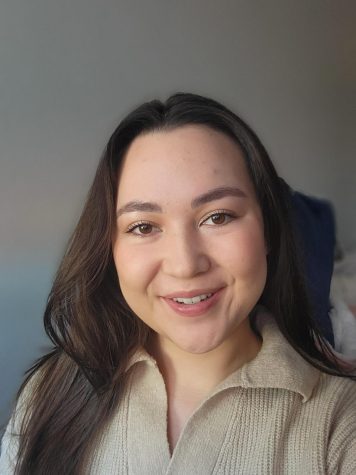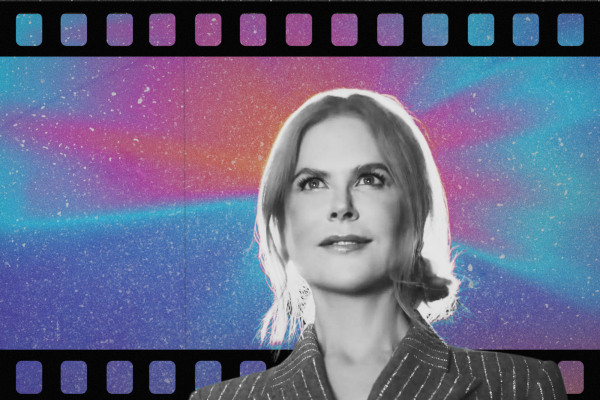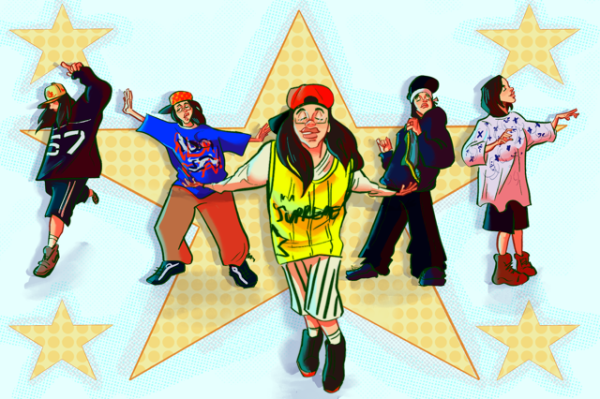Read, Write and Dream
An in-depth look into how Alex Aster became a best-selling author
Photo courtesy by Alex Aster
Taking her morning walk through the bustling streets of New York City with Blue Bottle Coffee in hand, sunlight filters through the trees and warms her face as she starts her day.
Alex Aster is a 26-year-old full-time best-selling author who lives in New York with her fiance. Her journey to achieving her dream career was full of challenges.
She became fixated with books at a young age. Looking back, she realized that stories offered an escape from anxiety that she did not even realize she had.
“I think books were my medicine,” she said. “I was lost in a world in front of me. I wasn’t thinking about anything else except for the story. Writing and reading were the only things that would suck me out of my own mind because it would be someone else’s thoughts, someone else’s story.”
She dreamed of becoming a published author at age 12. She remembers her mom driving her twin sister, Danny, and her to Barnes & Noble and imagining scenarios that would make a good book. She loved everything about the experience, being surrounded by the scent of paper and the aesthetics of reading.
Browsing through the Young Adult sections, she thought to herself, “I can do that; I can write a book.”
So, she started.
Aster was determined to make it happen and started writing stories at 13 and querying agents at 14. She has been on this journey for almost 15 years.
After writing her first page, she rushed to show her mom and sister and thought it was the coolest thing in the world.
Aster went through many heartbreaks and disappointments to get to where she is today. It was full of rejections and the difficulties of breaking into publishing, but she stayed strong, believing in herself. She is now an award-winning author of a graphic novel series, the children’s series “Emblem Island,” and her debut young adult novel “Lightlark” which will be published Aug. 23.
Anyone who pre-orders “Lightlark” before June 5 will get the pre-order gift of the first five chapters early and six character page overlays.
“Really I just thought, I want to write a book and I think I can do it,” she said.
While keeping the goal of becoming published in mind, she also dreamt of attending an Ivy League school.
Even though school made little sense to her, she studied relentlessly and joined every extracurricular she could, even if that made herself miserable.
Her persistence led her to being accepted to University of Pennsylvania. She visited the campus and fell in love. Aster explained that all her dreams felt possible there and it was some of the best years of her life.
Aster loved her time in college because she met lifelong friends and she loves to learn. However, she does not believe an academic degree is needed to become a successful author.
She said there were many amazing authors who she looks up to who never attended college. For instance, Adam Silvera had the No. 1 YA book of 2021 and did not go to college.
Although college is not necessary for this field, she said it was great for writing workshops.
She said writing can be an immense mental hurdle. Workshops allow writers to share their work and receive critiques. This creates distance between the writer and their work making them less defensive and improving their writing.
She said the key to a writing education is to read widely, read poetry, read outside the genre of interest and read even more books in the genre of interest that were written in the last two years because the market changes often.
“Just the act of writing a bunch of books and reading a lot is so much more valuable than, in my opinion, any type of formal education,” Aster said.
Eventually, Aster graduated summa cum laude from the University of Pennsylvania and earned a degree in English with a concentration in creative writing and marketing.
She landed two book deals shortly after she graduated college.
The advances were less than $10,000 each, but she was thrilled to have someone paying her. While it sounded like a lot of money, she quickly realized that she could not live off that amount for an extended time, especially when it was split into different parts.
She had to calculate the time it took to write, edit and get published. It was hard to justify all the work she put into it for that amount.
She ended up writing six books that no one wanted and her family watched her struggle for years. Aster’s newest YA novel, “Lightlark,” is what transformed her life.
“I was used to not being a lead title, getting really small advances [and] not getting a lot of marketing support,” she said. “Also, I saw what it’s like to be on the very bottom of the totem pole in terms of publishing.”
Looking back, Aster questions why she did not give up on the idea of “Lightlark” after it was turned down so many times.
It was her love for the story, the excitement in writing each scene and the love for the YA genre that helped keep her going. She would still write books even if she had not made it. That kind of passion is the only thing that led her to persevere after being told time and time again that she was not good enough and receiving all those rejections.
“I believe in myself always even when the world is telling me, ‘No, you shouldn’t believe in yourself,’ I always did,” she said.
Aster also thinks that writing can be therapeutic. It gives people the opportunity to rewrite history as well as rewrite what they wish would happen.
Sometimes she sees herself in her characters and writes them to be a braver, better version of herself. She found it interesting how real life informs fiction. She also shared what a day in her life is like.
She said up until she graduated from college, she would work until 4 a.m. because she was so passionate about her writing. Now, she has found a more sustainable routine that includes writing and social media.
Typical Work Day:
7:30 a.m. wake up
7:30 – 8:30 a.m. make coffee, get into the headspace for writing
8:30 a.m. – 12 p.m. write
12 p.m. lunch
Until 3 p.m. write some more
3 – 6 p.m. make social media content
Her schedule when she is on deadline is another story. She said deadlines hold a lot more pressure, writing from 5:30 a.m. till 12 a.m the next day.
“All I do is eat, sleep and breathe the book,” she said.
Aster said she loves this whole cycle. She can then take a whole week and sleep.
For her writing process, she will read, watch movies and sit in an incubation period brainstorming and outlining ideas.
“It’s so magical, it’s like these thoughts are just falling into your head,” Aster said.
The writing process for “Lightlark” was the first time she had ever written a book while listening to music.
Aster thinks the hardest part about publishing is that at any moment she can receive an email that changes her whole day. Her editor can send an email and then she has to clear her schedule and do copy edits all day. She said it is exciting but can throw her off.
Furthermore, Aster has said that being a woman of color has affected her journey to becoming a published author and influenced her series “Emblem Island.”
While her father is Italian and Swedish, her mother is Columbian. She grew up in a Columbian household where her grandparents lived with them, she even learned to speak Spanish before English. She included stories from her Columbian culture that her grandmother used to tell her sister and her at night.
She observed publishing go in the right direction by giving people of color major book deals and representing Latinos on covers, but editors go no further once they find one to endorse.
Aster said that publishing still has a long way to go in representing underrepresented voices.
Aster is proud to identify as a woman of color and Latinx. However, she hopes that books will not be promoted just for the sake of representing a certain group but because they are really good books.
She was filled with purpose when her little cousin pointed at the cover of her book and saw a kid who looked like them.
“I just wish [the book] hadn’t been so highlighted as a cultural book because at the end of the day,” she added. “I think a lot of these cultural books are just as good or better, so they should just be identified as a fantasy book not a multicultural fantasy book.”
She said to have these conversations and work towards change, more people of color need to be hired.
In her everyday life, Aster struggles with anxiety and finds that working in this industry makes it even harder to manage because there are so many aspects that are out of her control.
She said her mental health was the worst it has ever been right before she wrote “Lightlark.” Her previous agent and her parted ways. She was working towards this goal for so many years and she did not feel good about herself or her abilities at that point.
The anxiety builds up to the point where she can never sit still. She has to be doing something. Her mind is never in the present and she often thinks of the worst case scenario.
“It’s great for stories,” she said. “My mind is able to spin a million different scenarios but it’s not great to live with because any interaction, anything I do, it spins so many different narratives.”
Aster found that therapy improved her mental health and has been in therapy for the past few years.
She said it was helpful to put a name to what she was feeling and what it is. Anxiety is like living in the future in your mind and depression is like living in the past. She found the distinction helpful.
“I don’t want to live in the future,” she said. “In a future that doesn’t even exist and that probably will not exist. I want to live in the moment.”
In addition to therapy, drinking less caffeine has also helped her not spiral. Working out is helpful as well because she finds it meditative since she cannot think about anything else except how much her legs hurt. Walks, practicing gratitude, talking with her family and limiting social media as much as possible also helps.
Anxiety is something that Aster struggles with everyday. She makes a conscious effort to manage it or else she spirals to a dark place.
She said so many people struggle with anxiety or depression and she loves that more open conversations are taking place because mental health is a priority for her.
With her almost 15 years of experience in the industry, she wants to share some advice for aspiring writers.
She believes that the first book is purely practice for most people. She said in her first drafts, she doesn’t know what the book is about or what the characters are like until the last page.
She also said be patient. It can take years to get published and some books may never get published. That is OK.
“If the first few things you write don’t work, it doesn’t mean you’re a bad writer,” she said. “There’s no such thing as a bad writer. There’s just stages of writing.”
Aster said everything takes practice. No one is born an amazing writer, they have to practice. Each book written teaches a lesson. They can take influence from others and learn what their voice is. The more you write the more your style will emerge.
“You’re so assured in your own voice that the words come out stronger and that’s a beautiful process to have but it doesn’t come overnight,” she said.
She said never stop dreaming. Keep working hard and one day it will happen. It may take time but your dreams will come true if you do not give up.
To find out more about “Lightlark,” check out SAC.Media’s coverage of how it got to print.














Sylvie • Jun 4, 2022 at 8:00 am
Sensational!! So interesting, well thought out and well written and helpful to boot!!